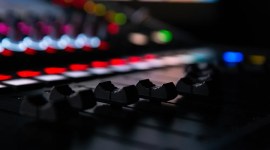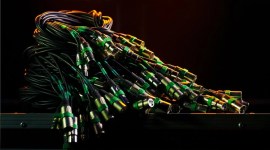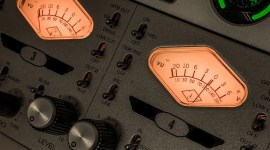
5 Essential Elements of Audio in Filmmaking
Capturing the perfect visuals is only half the story when it comes to the art of filmmaking. A film’s sound matters just as much—and yours isn’t finished without these essential audio elements.
Imagine a film with unintelligible dialogue. It would be difficult to understand, preventing viewers from being fully engaged.
Imagine a film with no sound effects or without any ambience. It would be flat. It wouldn’t feel immersive or realistic. The story on screen wouldn’t feel complete.
Understanding the basic audio elements of filmmaking can elevate your artistry, especially for indie filmmakers who may not be able to hire an entire sound crew.
Having a better perception of audio will contribute to your craft as a filmmaker and empower you to construct a living, breathing soundscape that positions your story within a convincingly real world.
Here’s what to consider when working with audio. . . .
1. Understanding Microphones
The first step toward truly immersive film audio is a basic understanding of the microphones you will need to capture the sound you want (as well as the polar patterns they occupy).
For recording dialogue on set, opting for a shotgun microphone as your boom mic will provide great accuracy.
These microphones have narrow pickup patterns known as supercardioid or lobar, which are highly favorable for precise pickup while rejecting background noise. They’re also ideal for anyone undertaking the art of foley.
For ADR, using a large condenser cardioid microphone is a perfect all-rounder that results in exceptional audio. Recording immersive natural ambience or field recordings requires a pair of microphones for a stereo configuration.
For something cheaper, using a handheld recorder with built-in microphones does the trick.
Some audio recording scenarios require more unconventional microphones, like an ambisonic microphone, which has a 360° pick up—perfect for VR purposes.
Handling microphones like a pro also calls for understanding gain levels. Generally, the audio should be peaking around -12dB and -6dB.
Setting these levels too high causes distortion, an occurrence that reduces the quality of audio.
Setting them too low will cause everything to sound too quiet, and when it comes to post-production editing, raising the gain levels here will bring in self-noise from the microphone.
Before hitting the record button, ensure you audition the sound to check your levels. Having a pair of monitoring headphones (here are our favorites) will help in these situations as they’re specially designed for critical listening.
2. Audio Editing
The audio editing process is where the magic happens. This crucial stage is where the sound is enhanced and shaped and problems are fixed—problems like noise, one of the greatest headaches in audio.
Noise typically happens in uncontrolled environments. Of course, it can also happen in a tightly controlled environment. Which is to say, noise is usually going to happen no matter what.
For example, low-end rumble will likely occur in most of the sources you record. Thankfully, it can be dealt with by using a simple EQ filter.
Sometimes noise shows up within the same frequency range as your chosen sound source, making it much harder to eliminate. Specialized de-noise plugins can handle noise removal, but they can easily become too invasive, affecting the over-all sound in unwanted ways.
Such problems can be avoided in the recording stage by ensuring you have proper acoustic treatment, suitable microphone positioning, and high-quality gear. If you can reduce noise right from the start, it makes the editing process a lot easier.
3. ADR
Automated Dialogue Replacement—aka ADR—is the process of re-recording dialogue in a controlled environment, usually a studio, for improved quality. ADR is also used for any dialogue alteration that happens after a shoot.
One of the most important aspects of ADR is your environment. Ensuring you’re in a properly controlled and acoustically treated environment will result in a seamless take. The idea here is to not make it noticeable to the audience that ADR was even used.
ADR also needs to be appropriately placed in the stereo field to enhance the realistic value of your video. You may have a character that has recorded ADR for their dialogue that happens off-screen.
ADR may also benefit from adding effects such as reverb. If you have dialogue that takes place in a space that has some natural reverberation, the ADR needs to match this. Applying some reverb will provide a sense of space—just be careful not to get too carried away!
4. Ambience
The wind rustling the leaves in a forest. Seagulls and breaking surf at the coast. The hustle, bustle, and chatter of a busy street. Ambient recordings are vital to bringing life to your scenic shots. Natural ambience is a form of diegetic sound and, without these sounds, scenes lack dimension.
The main challenge when recording ambience (especially when you’re capturing it yourself) is that it requires working in an uncontrolled environment. Having a strong, early understanding of your recording locations is key, so you can be prepared to adapt to unpredictable conditions out in the wild.
Here’s a helpful video loaded with tested field recording tips from David Dumais Audio.
While ambience is typically a primary concern when making a film, don’t hesitate to embrace the wonders of silence. With this clever technique, inaudible sounds within your shot’s natural ambience are amplified to create and promote the illusion of silence.
5. Sound Design
Solid sound design is what makes a film feel substantial and real. It’s the process that produces a film’s unique soundscape by combining all of its audio elements—on-set dialogue, ADR, field recordings, foley work, ambience, sound effects, film score, etc.
Sound design relies heavily on using audio effects to enhance the sound quality and characteristics for dramatic purposes. As mentioned previously, EQ can shape the sound, in addition to applying reverb and delay for spatial identity.
Other effects such as distortion and pitch shifting are great for more sci-fi-based material. (Or, if you just want to get creative and make the coolest possible sounds for your project!)
In larger-scale productions, you will get sound editors and sound mixers, both integral to the art of sound design. While these roles sound rather similar, they have different responsibilities.
Sound editors are responsible for dialogue, sound effects, ADR, and music. Sound mixers are responsible for balancing out all of the audio files into the film’s body of sound.
Indie filmmakers will take all these responsibilities on their own! While it may seem overwhelming, learning about the wonders of sound design can improve your attention to sonic details in your projects.
License this cover image via VAKS-Stock Agency.





